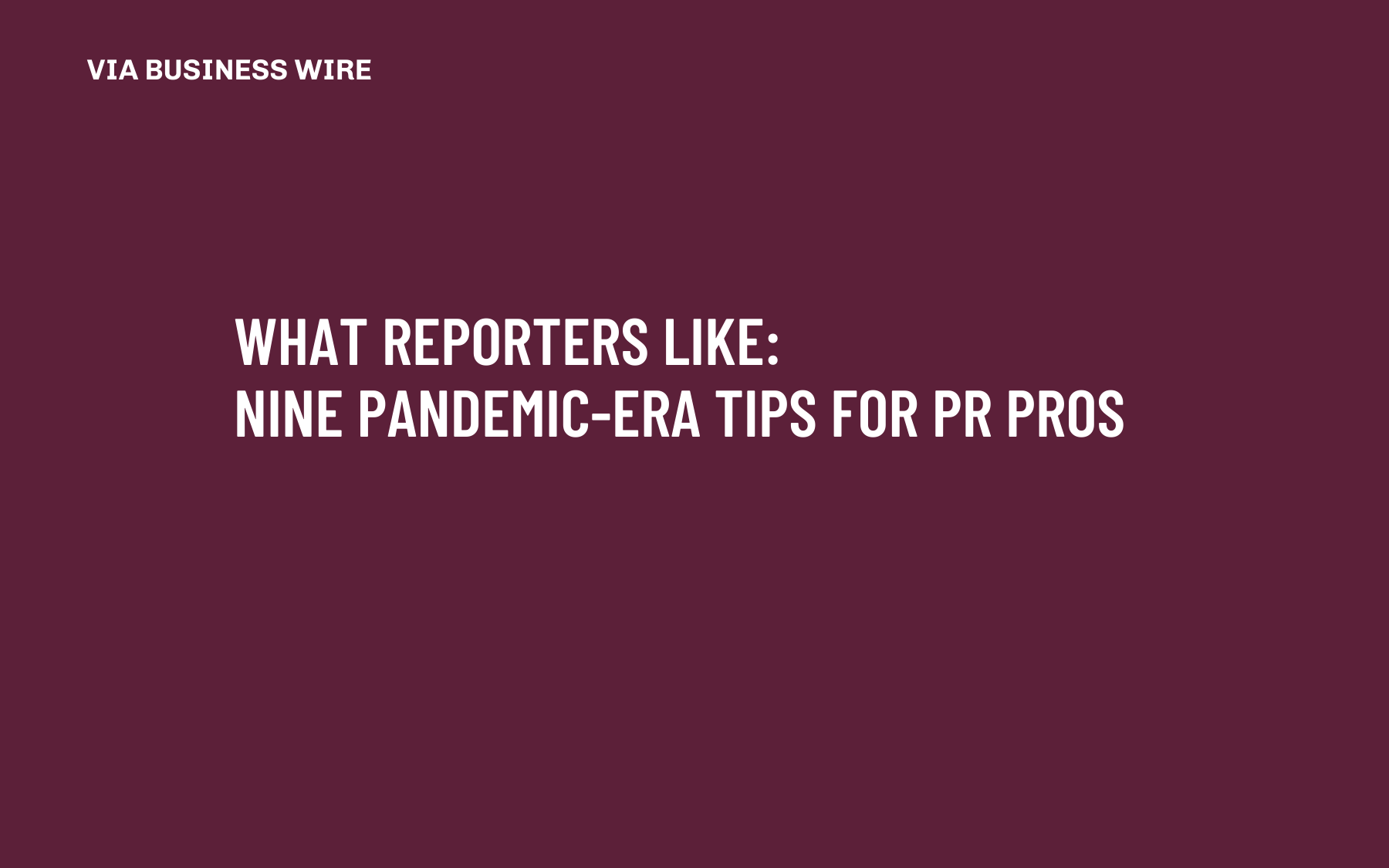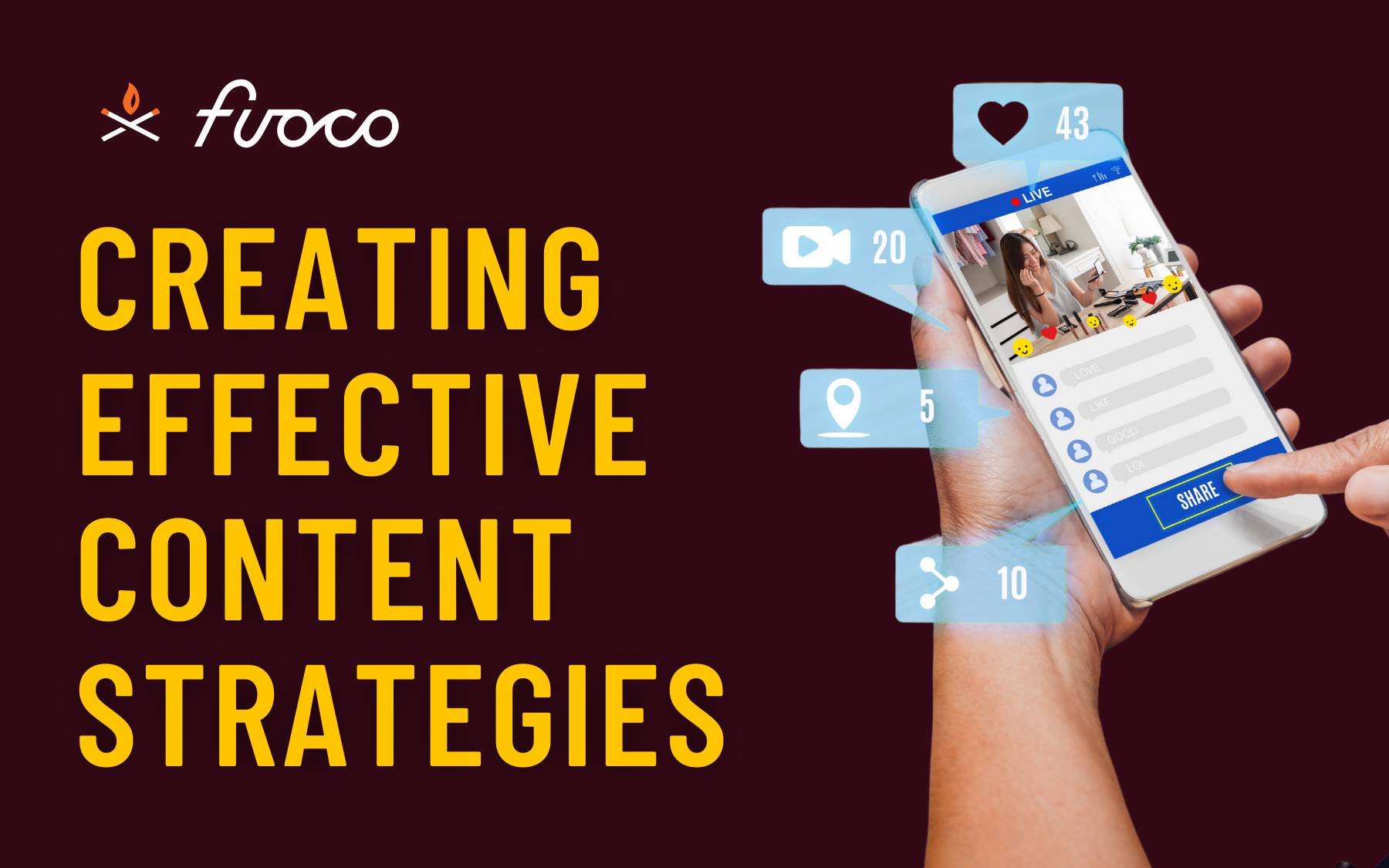What Reporters Like: Nine Pandemic-Era Tips for PR Pros

July 2, 2020
Insights from the Business Wire webinar ‘Preparing to Pitch the Media in a Post-Pandemic World’
Media relations is rife with factors out of even the most astute practitioner’s control. Throw in COVID-19, civil unrest, the upcoming election and the continued upheaval of the media landscape, and you’ve got yourself a real media relations conundrum.

Media relations is an ever-evolving artform that typically involves research, creativity, skilled writing and more educated shots in the dark than PR professionals would care to admit.
Eager for answers, we tuned in to “Preparing to Pitch the Media in a Post-Pandemic World,” an awesome webinar hosted by Business Wire, and boy are we glad we did!
The panel – which included Lydia Dishman, technology reporter and editor at Fast Company; Jefferson Graham, technology columnist at USA Today; and Anna Medaris Miller, senior health reporter at Insider – got about as real as it gets, sharing some great pitch tips for us PR types.
Here are a few key takeaways…
Don’t force yourself or your client into the discussion
Look at the companies you’re representing and ask yourself if it makes sense to bring them to the forefront of the conversation at any given time. If so, there is a major opportunity to use the media to amplify voices that may not have not been heard before.
That being said, this is a balancing act. You should never force an angle or try to newsjack a topic that has nothing to do with your client or the situation at hand. The journalist panel said they’re turned off by PR pros trying to be either too cutesy or too forceful with an angle. Rather, they appreciate honesty and pitches that reflect an understanding of the person and the medium they’re pitching.
Ultimately, PR pros need to consider what their client can authentically speak to and offer the best advice considering the circumstances.
“Every company has a story because every company is made up of people,” Dishman said. “If you’re looking for an angle, that is a good one.”
Craft a clever subject line
“Your subject line is my headline,” Graham said. Write a clever one, and you’ll get his attention as well as make his life easier.
Miller said her biggest attention-getter is offering a source or an expert she can interview, so if you have one, you might consider flagging this in the subject line. Oh, and anecdotes. Those are good, too.
Spend the whole day writing that subject line and sentence (aka pitch) if necessary
You should spend several hours – or even an entire day if that’s what it takes – developing a personal, compelling pitch. Graham said he can tell when pitches are mass produced, and he unfortunately receives way too many of them. Our clients don’t always understand why it takes so long to craft a pitch, much less get a story placement, but such is life and fine wine. These things take time.
That said, stand out by determining what each reporter you pitch is interested in writing about, coming up with a clear news angle, and then…
Write succinctly
Pitches should outline a clear news angle in as few sentences as possible. Dishman said if a pitch takes more than two to five sentences to explain a story, it’s probably not a good pitch. Graham went so far as to say it should only take one sentence to get a story idea across. “A subject line and a sentence. If you give me five sentences, I’ll never read them.”
Say what, Mr. Graham?!? We’re PR people, not ad copywriters. But, OK. We’ll work on it.
Avoid asking “quick questions”
“Quick question” emails aren’t quick unless they warrant a yes or no answer. Most reporters, Dishman said, hate these emails because they almost never contain a quick question. Rather, “quick question” pitches take a cheap shot at getting a journalist to read a pitch for which you didn’t care enough to put in the effort to write a better subject line. Touche’ Lydia. Quick question, though… jk.
Don’t call us, we’ll call you
Who has time for that anyway? And let’s be honest, when was the last time you even listened to your voicemail if someone bothered to leave one?
“We don’t even have landlines at our office, and I don’t answer my phone if I don’t know who it is,” Miller said. That makes, um, let’s see… ALL of us.
OK, so email or DM for the win. Plus, most journalists prefer to have a paper trail they can reference. They may not be interested right off the bat, but they may just file that email or DM away for future use. Having that virtual paper trail increases your chances of getting a reply, even if it’s months later.
Not only that, but Graham said people are inherently more nervous when speaking on the phone. Think of it this way: would your pitch to Forbes sound better spoken aloud in conversation, or sent via email after writing and editing it for an entire day or longer? Alrighty then 😉
Offer SME contact information, if possible
Miller said the number one thing that slows her and other journalists down is the fact that there is a mediator (AKA, PR pro) facilitating responses and interviews rather than allowing the journalist to be in direct contact with the SME, especially if she is on deadline.
That said, we all know this might not always be a possibility depending on the client. However, PR pros should always include the SME’s interview availability directly in the pitch.
Do your homework & show you care
What has the reporter you’re pitching written about lately, and would your pitch really be relevant to them? Each of the panelists agreed that PR pros need to do a significant amount of the heavy lifting when it comes to selling a story idea or source. This begins with doing research on the reporter you’re targeting and knowing what they’ve been writing about recently. It’s always wise to also check their Twitter account to see if they’ve indicated any stories on which they’re currently working or for which they need sources.
Also, it’s always best to write in layman’s terms. Break down the news angle by removing unnecessary technical jargon, as that’s what the journalist would ultimately end up doing for their readers. Show you care by making their job easier and doing some of the heavy lifting for them. Graham said he also appreciates some social media interaction. Follow him. Like, comment and share his stuff. Well, duh. We all like that, right? xxox
Press releases are for facts
“I don’t remember the last time I did a story off of a press release,” Dishman said, “but I do use them to link back to a fact in a story or as background.” Graham said that’s the only reason he likes press releases, because that’s where he can be sure to get such things as the correct spelling of a brand or product name.
Hungry for more? Here’s a link to the webinar recording: https://services.businesswire.com/resources-education/preparing-to-pitch-media-in-post-pandemic-world
Share this post:
More Sparks of Knowledge
Social Media in Healthcare – A Voice of Influence
May 24, 2022
The healthcare industry and its leaders have taken big hits over the last three years. Working in increasingly competitive, complex and compliance-driven environments. There are tons of mergers and acquisitions, lots of new players with big price tags, and talented folks leaving the industry in droves.
What is the Clubhouse App?
June 30, 2021
Every month, over 50,000 people ask Google, “What is Clubhouse?” Like the curious marketers we are, we set out to learn all things Clubhouse so we could answer that exact question for you!
Creating Effective Content Strategies Based in SEO
June 21, 2021
The important difference between search engine optimization (SEO) and content marketing, how to drive organic search traffic with quality content and how to leverage such knowledge to develop a successful content strategy.






